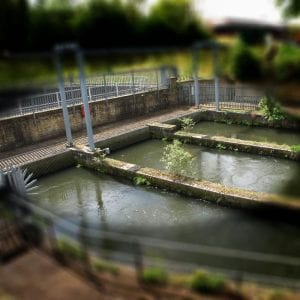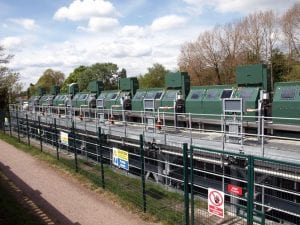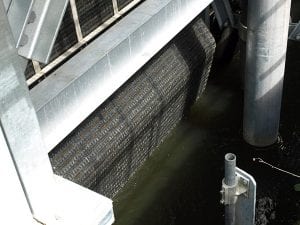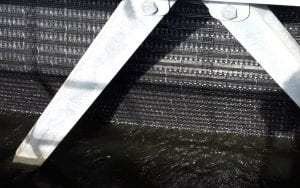Last Thursday, a number of people from various local fisheries groups were invited to view the new eel screens at Thames Water’s Kingston Advanced Water Treatment Works.
This is Thames Water’s (TW) latest investment across it’s network of water intakes, to fill local reservoirs, so that small juvenile fish, especially eels, no longer get sucked into the pumps. The ones at Kingston are the largest to date and cost £3.5m to install. The total budget set by TW is £35m by 2021 and these at Kingston should protect up to 30% of juvenile fish from either being killed in the intakes or transferred to the reservoirs.
The existing screens were no more than garden rakes with wide gaps of 50-60mm allowing many fish to pass through once the intake pumps were switched on. They were just designed to remove weeds and have been like that since they were first installed around the middle of the last century and are the same as at many other water company’s intakes.
These new screens are a large wide belt revolving vertically and the slots that allow water through are no more that 2mm wide thereby preventing any eels from being sucked in and most other fish fry too. As the screen rotates to the top of the system, a heavy jet of water cleans off the belt, clearing the slots read for their next immersion into the Thames.
The systems differ at each location with the idea of suiting the intake site, but always with a view to protecting the eel, now a red list endangered specie.
The day started with a presentation on how the screens operate along with the costs etc. Then EA Fisheries Officer, Darryl Clifton-Day, gave a short presentation on the plight of the European eel and how stocks have plummeted since the 1950s – 1970s. There was a marked increase in 2014 that cannot be explained and it was a hopeful sign that the eel was making a recovery. However, the counts for the subsequent 2 years have again been very poor so the story is still very depressing.
Following a safety advice lecture for the site, everyone had to wear PPEs, fluoro coats or vests, hard hats, safety glasses, gloves, and protective boots, before we proceeded to the see the screens. They are on view to the public from a public bridleway that separates them from the main site and protected behind a high fence. We climbed onto the units, hence the PPEs.
One question was, what about flooding, would the screens still be of any use or would water bypass them? The answer is, they are designed against all but a once in 200 year flood when water can bypass the screens.
Another point raised was about eel counts and how anglers might help. Martin Salter, representing the Angling Trust, has offered to speak to the ATr people to see if a phone app can be developed that anglers can download and record any eels that they catch along with sizes and location. With anglers cooperation this will be very useful in succeeding years.
The main benefits of some of these get-togethers are we get to meet people again that we haven’t seen for some time. The social contact is nice, but I got to make contact with the guy who represents the Loddon Consultative who will soon be creating some habitat improvement projects and also caught up with Luke from Thames 21 Charity who are doing some work on a stream with us.
Our big thanks should go to our local EA Fisheries Officer, Stuart Keable, for organising the visit.
Top: Keith Arthur and organiser Stuart Keable behind

















